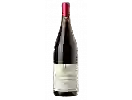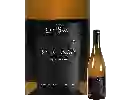
Winery Famille BougrierSaint Serre Sauvignon Blanc
This wine generally goes well with vegetarian, rich fish (salmon, tuna etc) or shellfish.
Food and wine pairings with Saint Serre Sauvignon Blanc
Pairings that work perfectly with Saint Serre Sauvignon Blanc
Original food and wine pairings with Saint Serre Sauvignon Blanc
The Saint Serre Sauvignon Blanc of Winery Famille Bougrier matches generally quite well with dishes of rich fish (salmon, tuna etc), shellfish or vegetarian such as recipes of pasta with tuna, californian sushi (reverse maki) or summer tuna quiche.
Details and technical informations about Winery Famille Bougrier's Saint Serre Sauvignon Blanc.
Discover the grape variety: Humagne blanche
A very old grape variety grown in Switzerland (canton of Valais) and in southwestern France under the name Miousat (Louis Bordenave-2007). It is not related to humagne rouge. According to published genetic analyses, it is related to the colombaud and the chichaud.
Last vintages of this wine
The best vintages of Saint Serre Sauvignon Blanc from Winery Famille Bougrier are 2018
Informations about the Winery Famille Bougrier
The Winery Famille Bougrier is one of of the world's great estates. It offers 139 wines for sale in the of Loire Valley to come and discover on site or to buy online.
The wine region of Loire Valley
The Loire Valley is a key wine region in western France. It follows the course of the Loire River on its Long journey through the heart of France, from the inland hills of the Auvergne to the plains of the French Atlantic coast near Nantes (Muscadet country). Important in terms of quantity and quality, the region produces large quantities (about 4 million h/l each year) of everyday wines, as well as some of France's greatest wines. Diversity is another of the region's major assets; the styles of wine produced here range from the light, tangy Muscadet to the Sweet, honeyed Bonnezeaux, the Sparkling whites of Vouvray and the juicy, Tannic reds of Chinon and Saumur.
The word of the wine: Feedback
Perception of the aromas in the mouth by the retro-nasal way.














